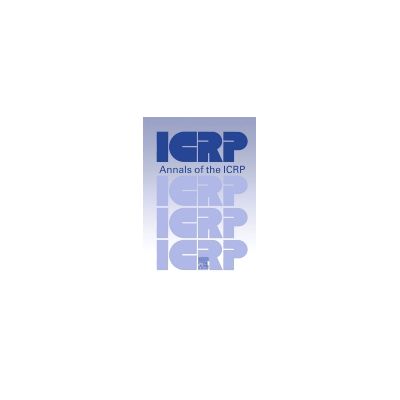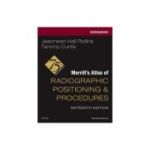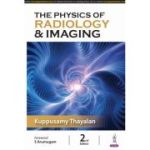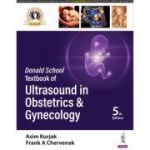ICRP Publication 121: Radiological Protection in Paediatric Diagnostic and Interventional Radiology

Price: 525,00 lei
Availability: in supplier's stock
Author: ICRP
ISBN: 9780702054396
Publisher: Elsevier
Publishing Year: 2012
Pages: 189
Category: RADIOLOGY & DIAGNOSTIC IMAGING
DESCRIPTION
Abstract-Paediatric patients have a higher average risk of developing cancer compared with adults receiving the same dose. The longer life expectancy in children allows more time for any harmful effects of radiation to manifest, and developing organs and tissues are more sensitive to the effects of radiation. This publication aims to provide guiding principles of radiological protection for referring clinicians and clinical staff performing diagnostic imaging and interventional procedures for paediatric patients. It begins with a brief description of the basic concepts of radiological protection, followed by the general aspects of radiological protection, including principles of justification and optimisation. Guidelines and suggestions for radiological protection in specific modalities - radiography and fluoroscopy, interventional radiology, and computed tomography (CT) - are subsequently covered in depth. The report concludes with a summary and recommendations.
The importance of rigorous justification of radiological procedures is emphasised for every procedure involving ionising radiation, and the use of imaging modalities that are non-ionising should always be considered. The basic aim of optimisation of radiological protection is to adjust imaging parameters and institute protection measures such that the required image is obtained with the lowest possible dose of radiation, and that net benefit is maximised to maintain sufficient quality for diagnostic interpretation. Special consideration should be given to the availability of dose reduction measures when purchasing new imaging equipment for paediatric use. One of the unique aspects of paediatric imaging is with regards to the wide range in patient size (and weight), therefore requiring special attention to optimisation and modification of equipment, technique, and imaging parameters. Examples of good radiographic and fluoroscopic technique include attention to patient positioning, field size and adequate collimation, use of protective shielding, optimisation of exposure factors, use of pulsed fluoroscopy, limiting fluoroscopy time etc. Major paediatric interventional procedures should be performed by experienced paediatric interventional operators, and a second, specific level of training in radiological protection is desirable (in some countries, this is mandatory). For CT, dose reduction should be optimised by the adjustment of scan parameters (such as mAs, kVp, and pitch) according to patient weight or age, region scanned, and study indication (e.g. images with greater noise should be accepted if they are of sufficient diagnostic quality). Other strategies include restricting multiphase examination protocols, avoiding overlapping of scan regions, and only scanning the area in question. Up-to-date dose reduction technology such as tube current modulation, organ-based dose modulation, auto kV technology, and iterative reconstruction should be utilised when appropriate.
It is anticipated that this publication will assist institutions in encouraging the standardisation of procedures, and that it may help increase awareness and ultimately improve practices for the benefit of patients.
The importance of rigorous justification of radiological procedures is emphasised for every procedure involving ionising radiation, and the use of imaging modalities that are non-ionising should always be considered. The basic aim of optimisation of radiological protection is to adjust imaging parameters and institute protection measures such that the required image is obtained with the lowest possible dose of radiation, and that net benefit is maximised to maintain sufficient quality for diagnostic interpretation. Special consideration should be given to the availability of dose reduction measures when purchasing new imaging equipment for paediatric use. One of the unique aspects of paediatric imaging is with regards to the wide range in patient size (and weight), therefore requiring special attention to optimisation and modification of equipment, technique, and imaging parameters. Examples of good radiographic and fluoroscopic technique include attention to patient positioning, field size and adequate collimation, use of protective shielding, optimisation of exposure factors, use of pulsed fluoroscopy, limiting fluoroscopy time etc. Major paediatric interventional procedures should be performed by experienced paediatric interventional operators, and a second, specific level of training in radiological protection is desirable (in some countries, this is mandatory). For CT, dose reduction should be optimised by the adjustment of scan parameters (such as mAs, kVp, and pitch) according to patient weight or age, region scanned, and study indication (e.g. images with greater noise should be accepted if they are of sufficient diagnostic quality). Other strategies include restricting multiphase examination protocols, avoiding overlapping of scan regions, and only scanning the area in question. Up-to-date dose reduction technology such as tube current modulation, organ-based dose modulation, auto kV technology, and iterative reconstruction should be utilised when appropriate.
It is anticipated that this publication will assist institutions in encouraging the standardisation of procedures, and that it may help increase awareness and ultimately improve practices for the benefit of patients.
Book categories
-Special order
-Soon to come
-Publishers
-Promo
-Callisto Publications
-New books
-- 444,15 leiMRP: 493,50 lei
- 274,05 leiMRP: 304,50 lei
- 604,80 leiMRP: 672,00 lei
Promotions
-- 444,15 leiMRP: 493,50 lei
- 274,05 leiMRP: 304,50 lei
- 604,80 leiMRP: 672,00 lei












OUR VISITORS OPINIONS